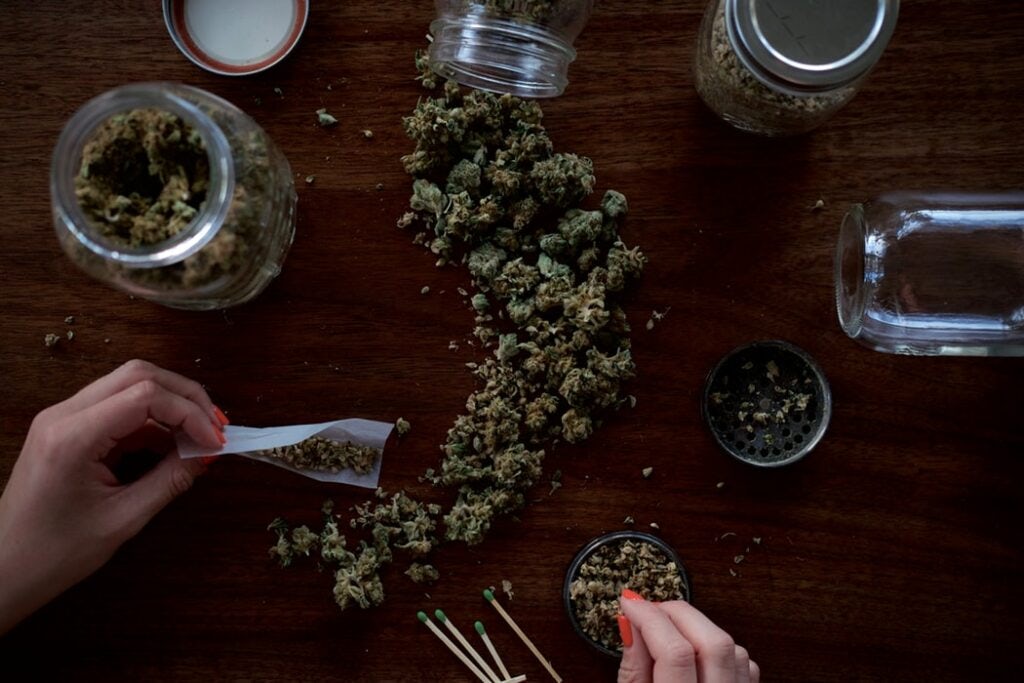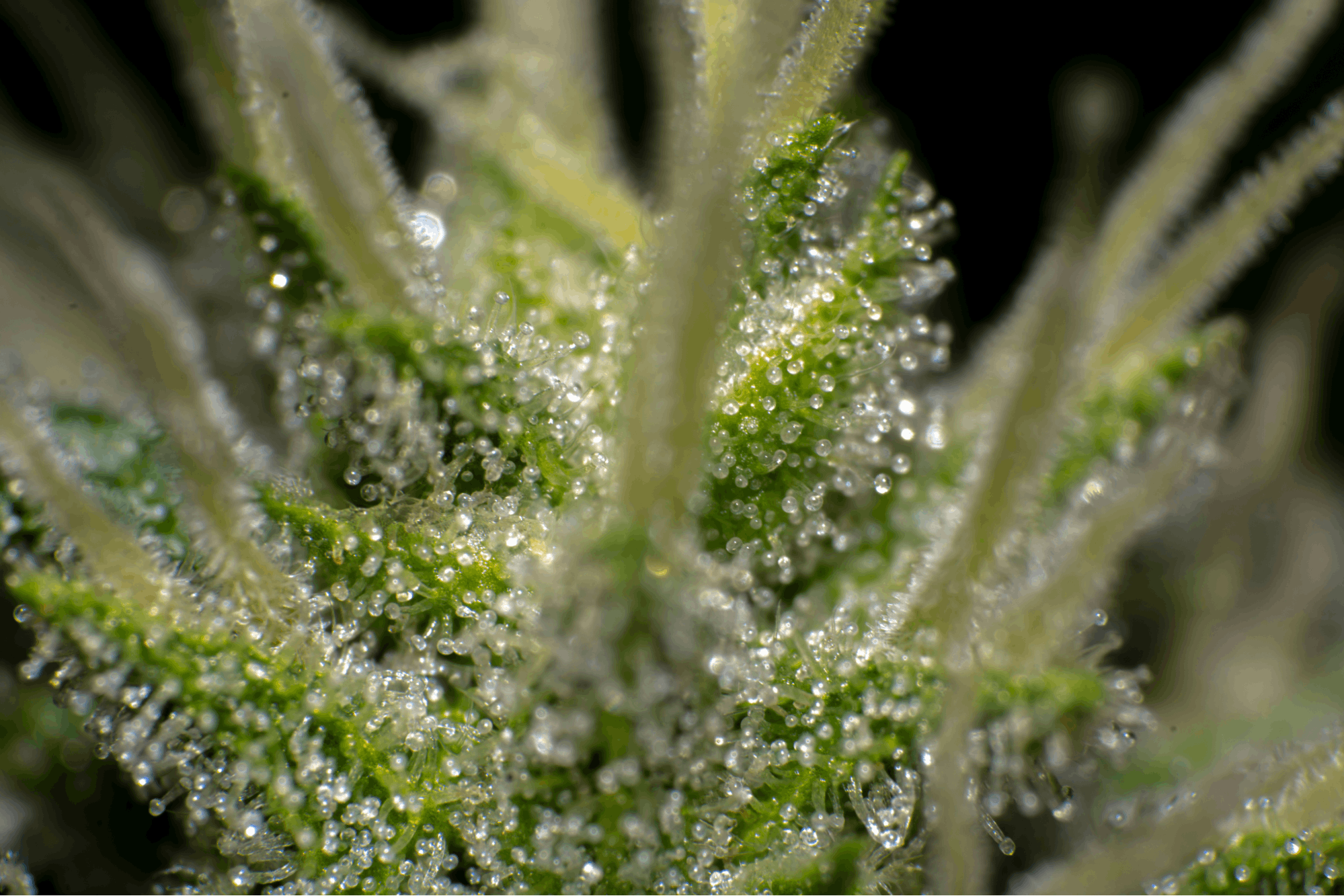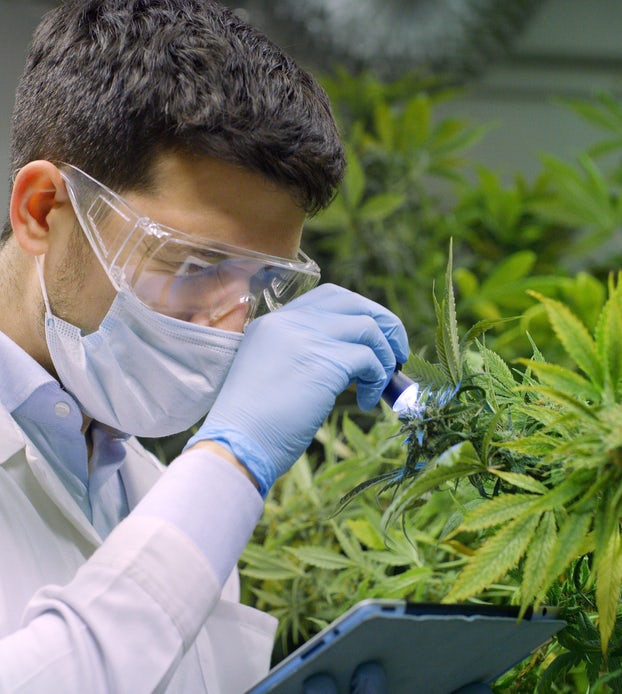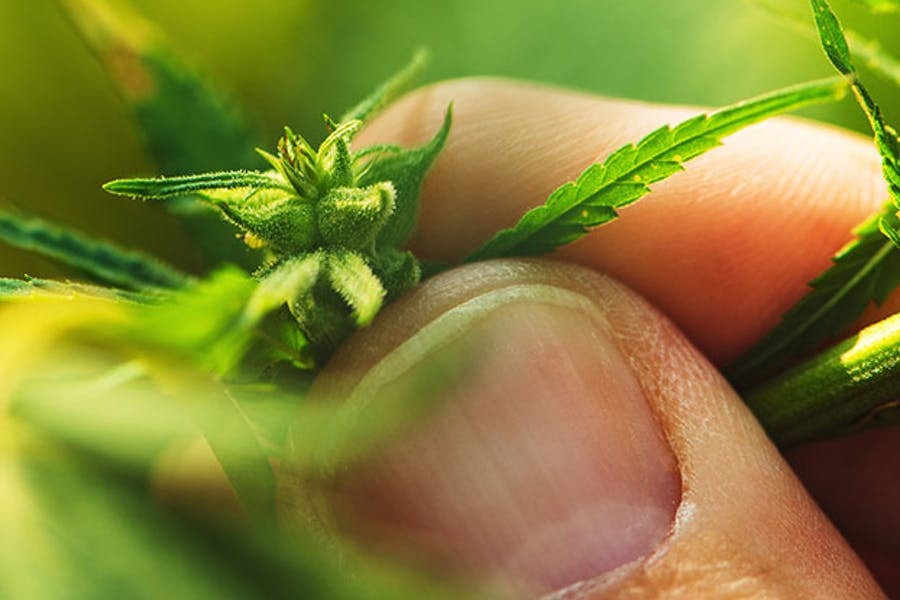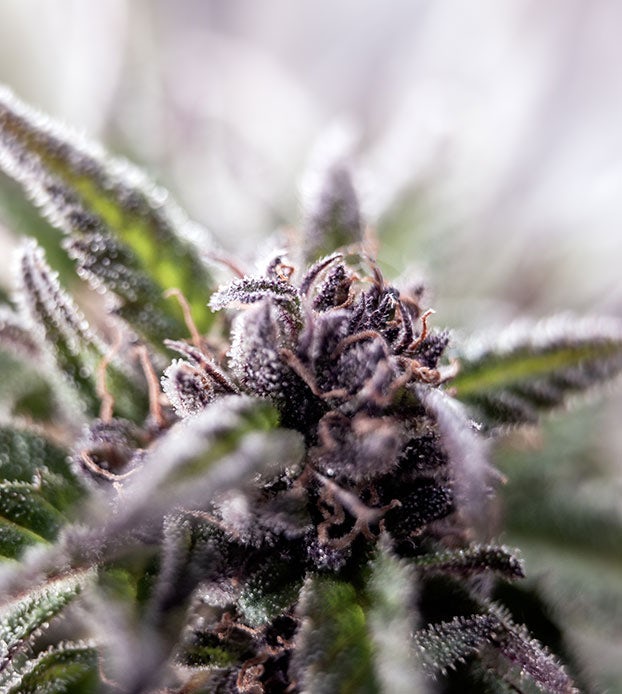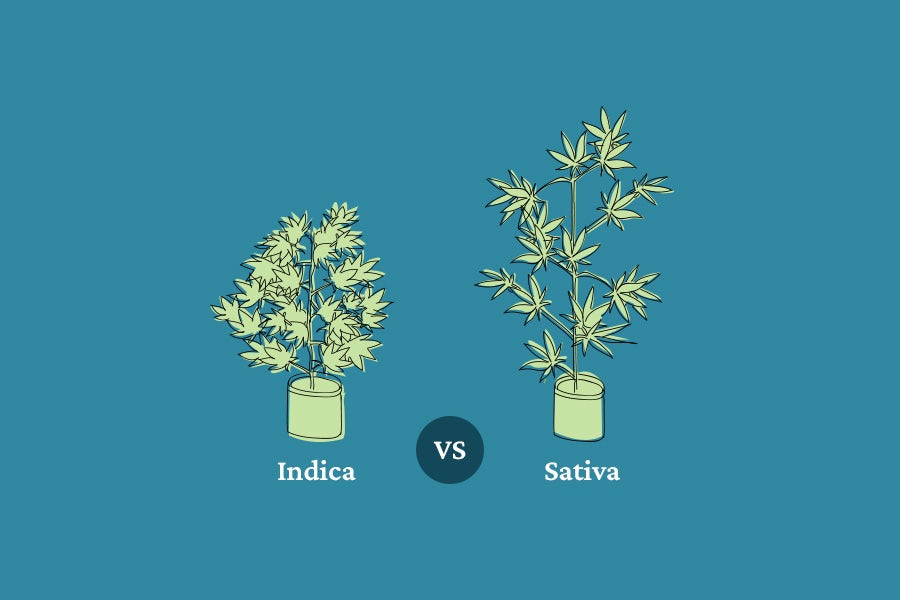It’s very simple. “Raw weed won’t get you high because it has not been decarboxylated,” says Dr. Junella Chin, an integrative cannabinoid medicine physician. “That means that the non-psychoactive cannabinoid THCA has not been turned into the psychoactive cannabinoid THC through a heating process.” However, advocates, researchers, and Dr. Chin believe that ingesting raw cannabis can offer unique health and wellness benefits.
Raw cannabis contains three cannabinoids with a carboxylic acid attached — delta-9-tetrahydrocannabinolic (THCA-A), cannabidiolic acid (CBDA), and cannabigerolic acid (CBGA) — that potentially have therapeutic effects. “Researchers believe THCA may function as an anti-inflammatory agent,” Dr. Chin continues.
Positive effect on brain cells
A study in the “British Journal of Pharmacology” supports Dr. Chin’s statement that THCA might have a protective effect on brain cells, which could lead to more research into its possible uses for neuroinflammatory diseases and neurodegenerative conditions1.
Boosting the immune system
Further studies from the journal “International Immunopharmacology” tested the effects of unheated cannabis extract and noted that THCA may help in boosting the immune system2.
Reducing nausea and vomiting
Other researchers explored the anti-nausea effect of THCA in rats and found it effective in reducing nausea and vomiting. That team, which published its findings in the “British Journal of Pharmacology,” went so far as to suggest that THCA may be a more potent alternative to THC3.
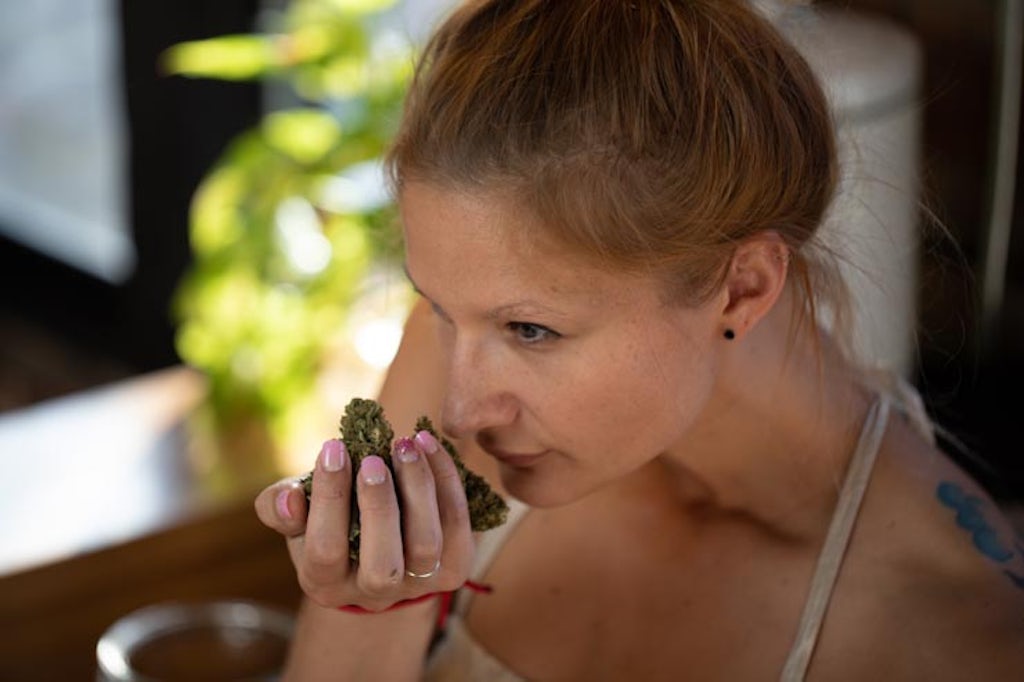
Researchers have also demonstrated the anti-nausea and anti-vomiting effects of low doses of cannabidiolic acid (CBDA)4 as well as finding that CBDA made the anti-nausea drug Ondansetron more effective5.
We also know that terpenes are sensitive to high temperatures. Consuming raw cannabis keeps these compounds in their natural state with access to therapeutic phytochemicals such as limonene and myrcene, which can induce relaxation and enhance wellbeing.
Finally, flavonoids round out raw cannabis’ chemical profile. As pigments that color plant tissue to attract pollinating species, flavonoids also protect plants from UV rays and pathogens.
Specific flavonoids found in raw cannabis include cannflavin A and B (anti-inflammatory agents), kaempferol (which augments the body’s antioxidant defense against free radicals), quercetin (which may help reduce inflammation, allergy symptoms and blood pressure) and anthocyanins (which can lower blood pressure, improve visual acuity, reduce cancer cell proliferation, inhibit tumor formation, and has anti-inflammatory and anti-bacterial activity).
What qualifies as raw cannabis?
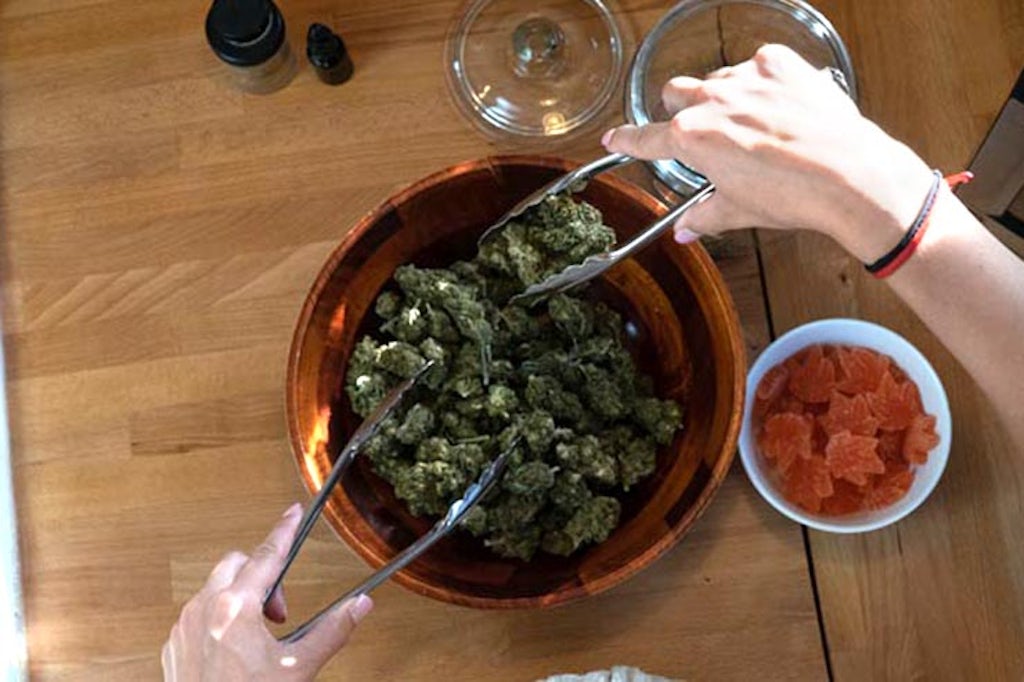
Whether you identify cannabis as a vegetable or herb, raw weed has earned a spot on the superfood list. From a nutritional perspective, cannabis packs protein, fiber, antioxidants, vitamins, and minerals. Cannabis leaves and hemp seeds contain both omega-3 and omega-6 fatty acids, so there’s a strong possibility that it could augment — or even one day replace — fish as a viable option for cardiovascular health6.
According to Dr. Rachel Knox, who co-runs the American Cannabinoid Clinics, omega-3 and omega-6 fatty acids are the raw materials for our endocannabinoids. “Anandamide and 2-AG are derived from [omega]-3 and [omega]-6 and OEA and PEA are derived from [omega]-3. All have neuroprotective properties. Omega fatty acids are also known as essential fatty acids because we cannot make [enough of] them in our bodies. We have to obtain them through our diet.”
However, the buds and leaves must be fresh. Even letting cannabis dry or sit for too long will degrade cannabinoids and terpenes. To get these nutrients, the plant should not be cooked, steamed, smoked, vaped, or dried.
For many, the idea of chewing fresh marijuana buds and leaves is not appealing, but don’t worry. Chefs are catching up with science and incorporating raw weed into their menus to develop distinctive and delicious alternatives.
“At Cafe Cannal in New York City, we blend raw cannabis leaves into our green smoothies,” says chef and founder Maya Hayashi. “We source from local Hudson Valley hemp farmers who cultivate young hemp leaves. We simply and gently wash the leaves as they might have residue from the packaging and shipping process.”
“Our signature Cannabis Leaf Salad has raw, young cannabis leaves, kale, avocado, roasted beets, Meyer lemon dressing,” Hayashi continued. Our specialty herbal teas blends are also made with raw cannabis that are not psychoactive. Our herbal tea blends are prepared using the raw forms of CBD and THC known as CBDA and THCA.”
Juicing raw cannabis
While it does take a lot of leaves to juice a single serving, if you use too many leaves, the beverage is bitter tasting. “Think of it as microdosing,” says Hayashi, “using enough leaves as an additive to the recipe, yet careful not to overpower the taste buds.”
Dani Fontaine has been juicing raw cannabis for years.
“My inflammation is at an all time low,” she says. “Every morning, I throw raw cannabis buds and leaves into whatever I am juicing. I juice everything, minus the stalk. The terpenes are all in the bud and the leaves have minerals and nutrients.”
Dani knows her plant. She created Colorado’s first organic edible company and then the Colorado Hemp Project. She recommends juicing to patients, many of whom travel miles to see her and test her latest Nature’s Root products.
While consuming raw cannabis enhances the endocannabinoid system — the regulatory network that keeps the body in balance and which interacts with cannabis — without getting you high, it is important to know where your cannabis comes from.
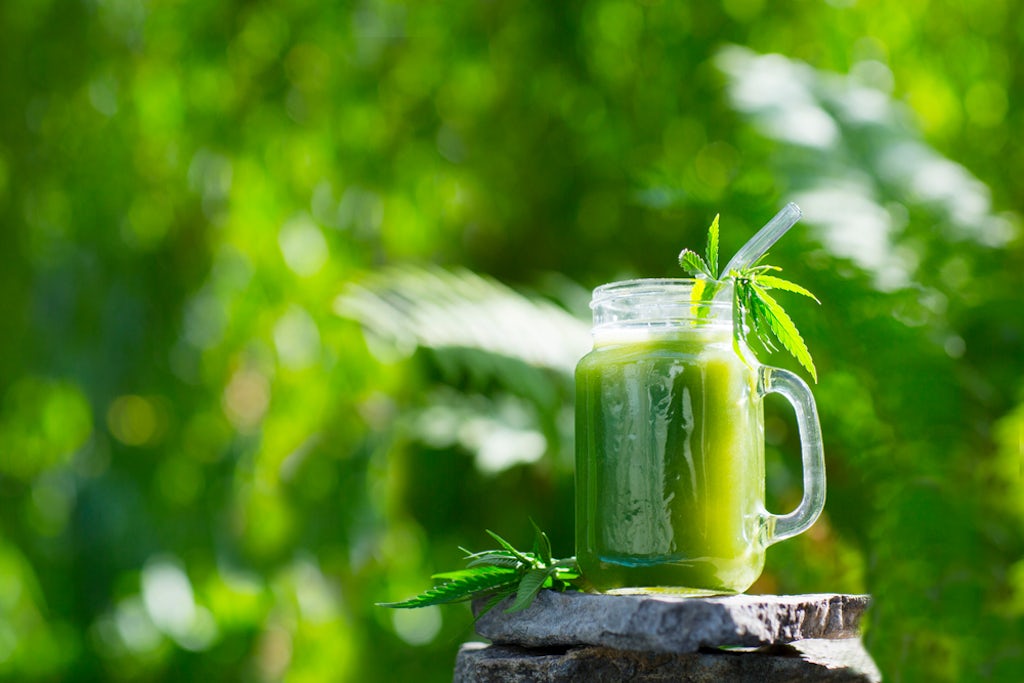
Cannabis can grow in contaminated and toxic soil and absorb chemicals through phytoremediation7. Polluted elements are usually stored in the leaves, stalk, or stems.
Of course, eating any raw food comes with some risks. Both salmonella and E. coli have been found on cannabis samples. Some growers use chemical pesticides, which can leave a residue on flowers and leaves. Only consume cannabis that hasn’t been treated with chemicals or manure. Source raw cannabis only grown on organic farms.
States with legal cannabis programs usually require laboratory testing to ensure that toxins, pesticides, heavy metals, and other contaminants are not present in the cannabis flower — so it’s always a good idea to purchase your cannabis from a licensed dispensary.
Can raw weed be a potential new superfood?
Cannabis use can be traced back thousands of years, but modern researchers are just beginning to explore the health benefits of raw cannabis and its role in plant-based nutrition.
Think of plant medicine holistically — vitamins versus whole plant diet. While there is a role for supplements and vitamins, especially if there are dietary gaps, eating cannabis supplements cannot reproduce the benefits found in nature. At best, they are partial representations of the complexes that nature produces.
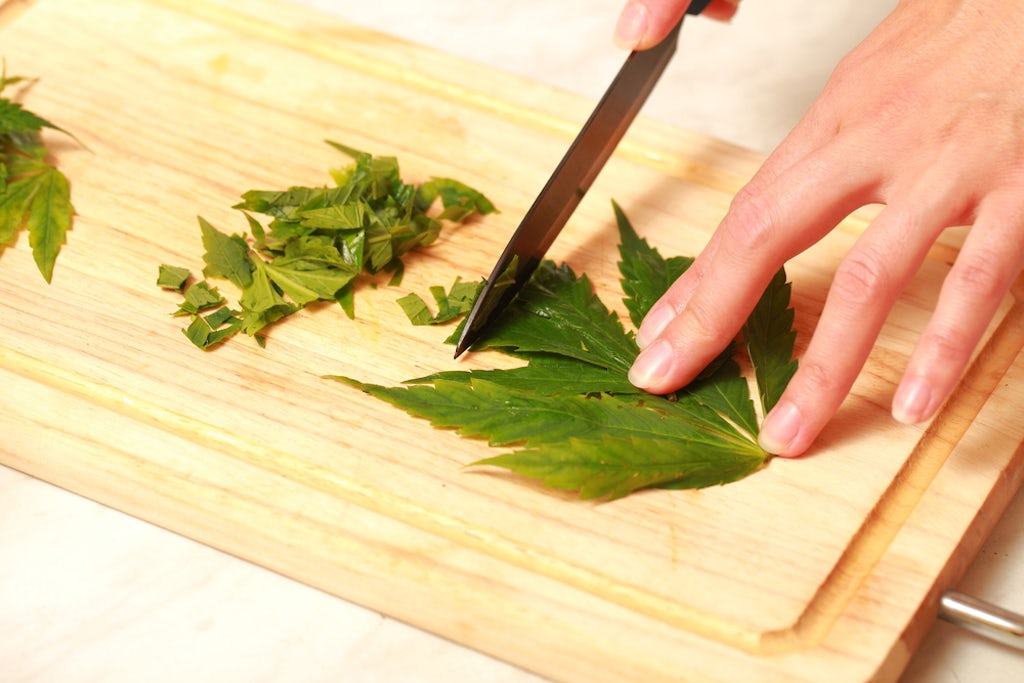
“You want to eat the natural sources of cannabis,” says Dr. Chin. “There are synergistic effects of the complex compounds found in plants and a complex bioavailability that we can’t quite measure in a lab.”
Today, hemp is considered a superfood by many food science experts, including Dr. Chin. Raw cannabis could easily become a popular functional food. When it is consumed like a leafy green vegetable or herb garnish, your body benefits from the whole plant profile. Think of cannabis like kale (red Russian, leaf, dino). There are many varieties which have different variations of nutrients.
However, it is important that patients have conversations with healthcare providers to discuss cannabis use for health and wellness. Clinicians also must be able to educate and guide patients to safe and effective cannabis use for a personalized approach. As cannabis use expands from plant-based medicine to plant-based nutrition, consult with a registered dietitian and nutritionist who knows cannabis.
Sources
- Nadal, X., Del Río, C., Casano, S., Palomares, B., Ferreiro-Vera, C., Navarrete, C., Sánchez-Carnerero, C., Cantarero, I., Bellido, M. L., Meyer, S., Morello, G., Appendino, G., & Muñoz, E. (2017). Tetrahydrocannabinolic acid is a potent PPARγ agonist with neuroprotective activity. British journal of pharmacology, 174(23), 4263–4276. https://doi.org/10.1111/bph.14019
- Verhoeckx, K. C., Korthout, H. A., van Meeteren-Kreikamp, A. P., Ehlert, K. A., Wang, M., van der Greef, J., Rodenburg, R. J., & Witkamp, R. F. (2006). Unheated Cannabis sativa extracts and its major compound THC-acid have potential immuno-modulating properties not mediated by CB1 and CB2 receptor coupled pathways. International immunopharmacology, 6(4), 656–665. https://doi.org/10.1016/j.intimp.2005.10.002
- Rock, E. M., Kopstick, R. L., Limebeer, C. L., & Parker, L. A. (2013). Tetrahydrocannabinolic acid reduces nausea-induced conditioned gaping in rats and vomiting in Suncus murinus. British journal of pharmacology, 170(3), 641–648. https://doi.org/10.1111/bph.12316
- Rock, E. M., & Parker, L. A. (2013). Effect of low doses of cannabidiolic acid and ondansetron on LiCl-induced conditioned gaping (a model of nausea-induced behaviour) in rats. British journal of pharmacology, 169(3), 685–692. https://doi.org/10.1111/bph.12162
- Rock, E. M., Limebeer, C. L., Pertwee, R. G., Mechoulam, R., & Parker, L. A. (2021). Therapeutic Potential of Cannabidiol, Cannabidiolic Acid, and Cannabidiolic Acid Methyl Ester as Treatments for Nausea and Vomiting. Cannabis and Cannabinoid Research. https://doi.org/10.1089/can.2021.0041
- Rodriguez-Leyva, D., & Pierce, G. N. (2010). The cardiac and haemostatic effects of dietary hempseed. Nutrition & metabolism, 7, 32. https://doi.org/10.1186/1743-7075-7-32
- Husain, R., Weeden, H., Bogush, D., Deguchi, M., Soliman, M., Potlakayala, S., Katam, R., Goldman, S., & Rudrabhatla, S. (2019). Enhanced tolerance of industrial hemp (Cannabis sativa L.) plants on abandoned mine land soil leads to overexpression of cannabinoids. PLOS ONE, 14(8), e0221570. https://doi.org/10.1371/journal.pone.0221570
Sign up for bi-weekly updates, packed full of cannabis education, recipes, and tips. Your inbox will love it.

 Shop
Shop Support
Support
